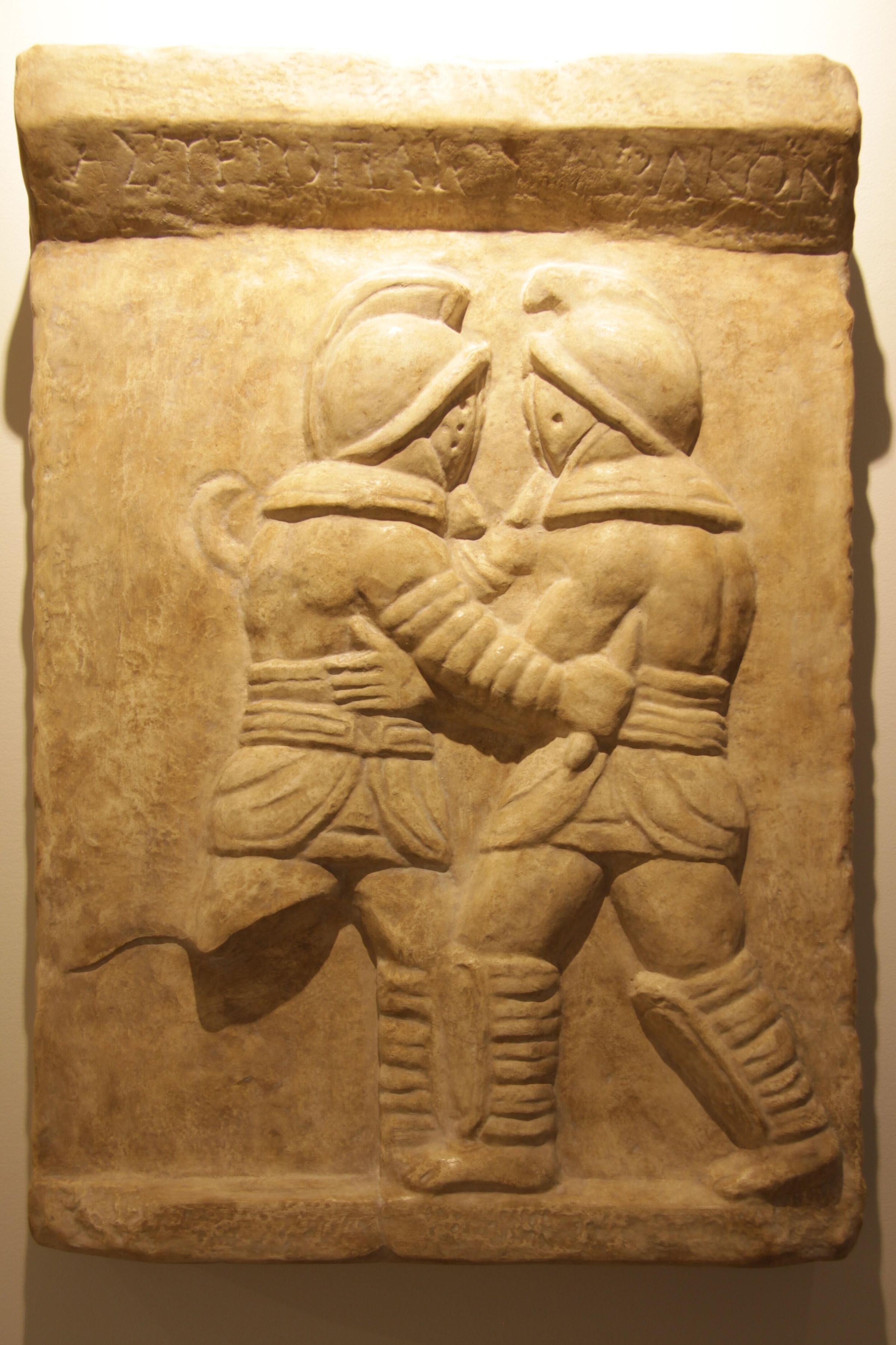Asteropaios and Drakon
Name/Title
Asteropaios and DrakonEntry/Object ID
19R03234Description
Relief depicting two gladiators fighting in full armor.Type of Sculpture
ReliefContext
Sculpted relief from Ephesus (Turkey) carved onto a rectangular marble slab (60 x 41.5 cm x 11 cm) missing a square portion in the lower left-hand corner. It depicts two gladiators in full battle armour stepping towards one another and grasping one another with their arms in what appears to be a pivotal moment in the fight. Their names, Asteropaios and Drakon, are carved in Greek on a raised ribbon just above their heads. In terms of their equipment, Drakon, on the right, wears the armour typical of a ‘Thracian’: a loincloth (subligaculum), a helmet with visor, a broad belt, and armour (greaves) to protect his shins. His chest is bare. The typical small shield (parmula) and segmented metal armour (manica) Thracians usually wore on their right arms are not depicted. Asteropaios has been identified as a Murmillo, a type frequently paired with a Thracian (Junkelmann, 2008). Typically, a Murmillo was armed and protected with some of the same gear worn by Roman soldiers. He wore a crested helmet with face shield, a manica on the left arm, a bronze greave or protector (ocrea) on the right leg and a leather protector on the left leg. A Murmillo fought with a short sword (gladius) and carried a large shield (scutum). In this image, though, the scutum, if present, cannot be seen. Damage to the relief has made it impossible to distinguish what Asteropaios is wearing on his legs. The relief depicts Asteropaios holding Drakon’s shoulder and thrusting his short sword or dagger into Drakon’s side. Drakon clasps Asteropaios’ waist, though the fact that the blade of his curved sword can be seen behind Asteropaios’ back tells us that he has not been as successful in striking a blow. According to German scholar Paul Jonas Meier (1849), the two are in a sort of dance at the final moment of their encounter and Drakon is depicted calmly accepting a fatal blow. Is it possible that the artist has recorded the final moment of a contest between these two professional gladiators?Made/Created
Date made
200 CE - 300 CETime Period
Roman ImperialPlace
City
EphesusRegion
Asia MinorEthnography
Culture/Tribe
Roman

